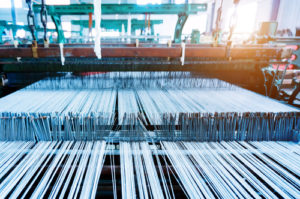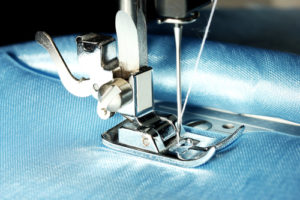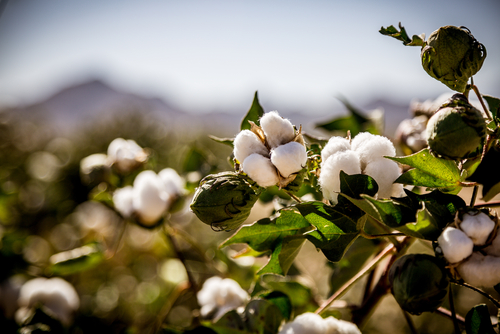If you have a favorite cotton t-shirt, you may have wondered exactly how it was made. You probably already know that cotton comes from a plant, and you might even have a rough idea of what it looks like. You are likely unaware, though, of the process it must go through in order to become a functional piece of clothing.
One hundred percent cotton is widely used in the garment industry because it is renewable, durable and comfortable. It also has moisture-wicking properties that make it excellent to wear close to the skin. How exactly does the humble plant become a finished product, though? Let’s dive in to the process.
Turning Cotton Plants into Thread
In many parts of the world, cotton is a major export. It is grown in places like the Southern United States and other regions with warm weather. During harvest, farmers collect the fluffy fiber that grows around the seed of the cotton plant. This fluffy fiber is typically bundled into large bales and transported to factories.
Using special equipment, factory workers strip the cotton fibers into individual units. These individual units are then intertwined and spun together to form cotton thread. In their raw state, cotton fibers are not particularly strong. Once spun together, however, the resulting thread is strong enough for use in a wide variety of applications.
Cotton thread that is intended for use in clothing may then be treated or dyed.
Turning Thread into Fabric
 Cotton thread can be turned into fabric in a few different ways. It can be knitted or it can be woven to create fabric that can be used for clothing. Weaving is one of the most common methods. Human or robotic workers use large looms to weave cotton thread. Row after row of cotton is added to the loom in overlapping horizontal and vertical patterns to create a solid piece of cloth. The size of the loom determines how large the resulting cloth can be.
Cotton thread can be turned into fabric in a few different ways. It can be knitted or it can be woven to create fabric that can be used for clothing. Weaving is one of the most common methods. Human or robotic workers use large looms to weave cotton thread. Row after row of cotton is added to the loom in overlapping horizontal and vertical patterns to create a solid piece of cloth. The size of the loom determines how large the resulting cloth can be.
The fabric for cotton t-shirts, however, is usually knitted. The process is very similar to knitting a sweater, but instead of large needles and thick yarn, it is done on a much smaller scale using thread. Knitted cotton fabric is generally machine made, and it is a popular choice for things like t-shirts and leggings because it is more stretchy than woven fabric.
After the cotton yarn has been woven or knitted into a solid piece of fabric, various finishes may be applied. If the thread used was not dyed, the cloth may be. Finishes to reduce wrinkles, make the fabric softer, etc. may also be applied. The finished fabric is then packed up and shipped off to the customer.
Turning Fabric into Clothing
 Once cotton fibers have been spun into thread and woven or knitted into fabric, they are ready to be used to manufacture clothing. The cloth may go to a designer or a seamstress, or it may be sent to another factory where cotton clothes are produced in bulk. It can be cut by hand or by machine, but in any case, patterns are used to ensure consistency and maximize the number of pieces that can be cut from a single piece of fabric.
Once cotton fibers have been spun into thread and woven or knitted into fabric, they are ready to be used to manufacture clothing. The cloth may go to a designer or a seamstress, or it may be sent to another factory where cotton clothes are produced in bulk. It can be cut by hand or by machine, but in any case, patterns are used to ensure consistency and maximize the number of pieces that can be cut from a single piece of fabric.
After all the necessary pieces have been cut out, they are assembled according to the instructions for the pattern. Workers add cuffs, hems, zippers, buttons and other adornments as necessary. The finished products are then shipped to retailers around the world.
In Conclusion
Cotton is a popular fabric in the garment industry for numerous reasons. It offers exceptional comfort and durability, and it is highly sustainable. It can be grown and harvested using environmentally friendly methods and techniques and it is a renewable crop. Several steps are involved in transforming the plant into a finished product, but the end result is well worth the effort.
The next time you pull on your favorite cotton t-shirt, think about what you just read and imagine how different the world would be if humans hadn’t learned how to transform the humble plant into a versatile fashion staple.





